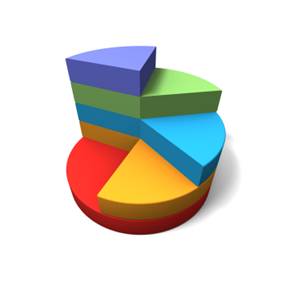Equity in the distribution of income - Introduction

Syllabus: Explain the difference between equity in the distribution of income and equality in the distribution of income.
 Income
Income
Land receives rent
Labour receives wages and salaries
Capital receives interest, yields and dividends
Entrepreneur receives profit
Basically the distribution of income refers to the share of
total income owners of the various factors of production receive. This
could be between each category (eg looking at income recieved by owners
of labour - wages - compared with owners of capital - interest or
within a given category (eg income received by factory managers
compared with income received by nurses).
 Equity
Equity
Equity refers to fairness and
looks at whether the distribution of income (ie the relative amounts
people receive as income) can be seen as `fairī: Should Business
Executives receive a greater income than Economics Teachers, for
example? (RCB says no but he would rather the income received by
Economics Teachers be increased to that of Executives than that of
Executives lowered to Economics Teachers - this is indeed a
double-edged sword!). Anyway, the market system or market (price)
mechanism rewards owners of factors of production according to the
relative supply and demand situation. You can use a S and D diagram
showing inelastic supply of labour (or other FoP): Increases in demand
will impact greatly on the reward (wages if labour - Rock Stars,
sportspeople, Bank CEOs etc; city centre rents if land; high interest
returns if capital, dotcom boom;)
 Equality
Equality
Equality is concerned with making incomes closer to each other
(narrowing differentials) and the assumption often made is that more
equal is better than less equal: This is highly controversial though.
Superficial analyses of communism say that the wish is to make all
incomes equal. But neither in practice (Compare Poliburo members income
- especially real income - compared with a factory worker) or in theory
(From each according to his ability to each according to his need, Karl Marx does not suggest equality but it does imply equity)
In western economies incomes are mainly determined by markey
forces but it is of course much more complex than that where there are
no market forces - eg Public Sector workers and Civil Servants and
relativities come into play.
Market Economies do lead to wide disparities between onwers of
factors of production and there is always a great deal of argument
about the rich getting richer and the poor getting poorer; or
politicians awarding themselves high pay rises when other people are
experiencing real wage cuts. You can make your own mind up about the
relative merits of each argument - it can be fun though watching Fox
News - as long as you do not get sucked into their simplistic world.
In all economies government policy will often be aimed at using taxes and benefits to make incomes at least a little more equal .